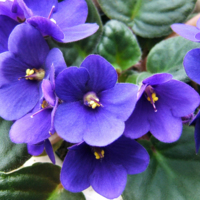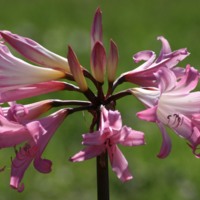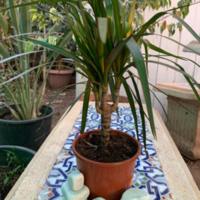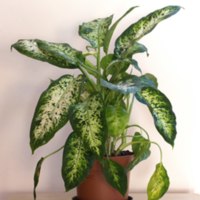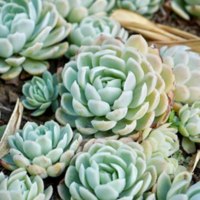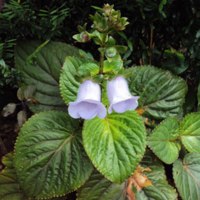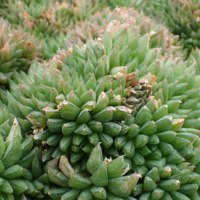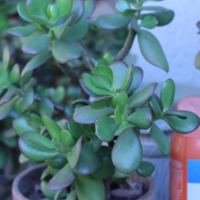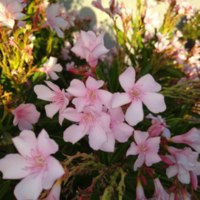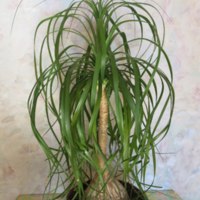Browse Items (16 total)
Sort by:
-
African Violet
Scientific name Saintpaulia ionantha is safe and even beneficial for both cats and dogs. This plant requires strong indirect light 10-12 hrs daily, temperatures between 68° – 85°F, 80% humidity, re-pot annually, and watering once a week. It is considered a fairly picky plant and should not be watered from above as water hitting the leaves may cause permanent spotting. -
Dragon Tree
Scientific name is dracaena marginata and is poisonous to both dogs and cats. If ingested symptoms include vomiting, drooling, and muscle weakness. Dragon trees need bright, indirect sunlight and should not be overwatered. Let the first couple inches of top soil dry out before watering again. Ideal temperature range is 70 to 80 degrees F. -
Dumb Cane
Scientific name is dieffenbachia and is poisonous to both dogs and cats. Symptoms if ingested include vomiting, burning and swelling of the mouth, difficulty swallowing, and difficulty breathing. Dumb Cane is relatively easy to take care. It requires indirect, bright sunlight and moist soil. Ideal temperature range is between 60 and 80 degrees F. -
Echeveria
Known by echeveria, which describes a genus in the family Crassulaceae, the scientific name is Echeveria elegans. Safe for dogs and cats. As a succulent, echeveria need less care than many plants. For care, echeveria need 4-6 hours of sunlight each day. Water when the soil is completely dry. -
Haworthia
Haworthia cooperi is part of a varied species of the Haworthia genus. It requires watering every two weeks, or once a month in the winter when it is dormant. Alternatively, water it when whenever the soil is able to dry out. It prefers bright, indirect light and does not require fertilizer. This plant is slow-growing and does not often outgrow its pot. -
Jade Plant
Scientific name is crassula ovata and is poisonous to both dogs and cats. These plants are easy to take care of and require little attention. They need direct sunlight, and the soil should be moist at all time and never dry out. Ideal temperatures during the day range from 65-75 degrees F. The ideal temperature range during the night is 50-55 degrees F. -
Ponytail Palm
Scientific name is Beaucarnea recurvata and is safe for both dogs and cats. These plants are easy to take care of and require little attention. They need bright, indirect sunlight. Allow the first inch or two of the top soil dry out completely before watering again; ponytail palms do not require much water. Normal room temperatures are fine for the palm.
